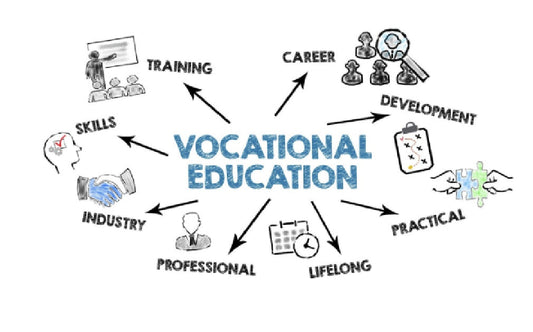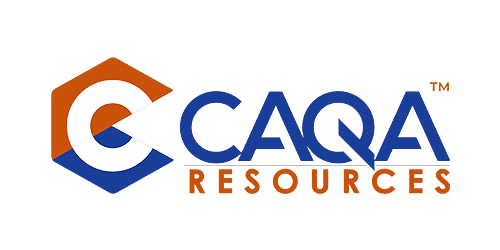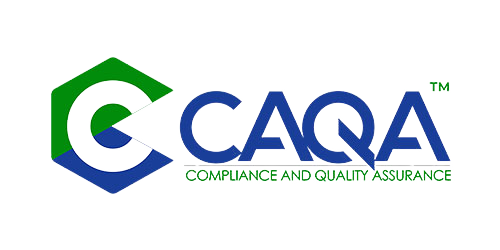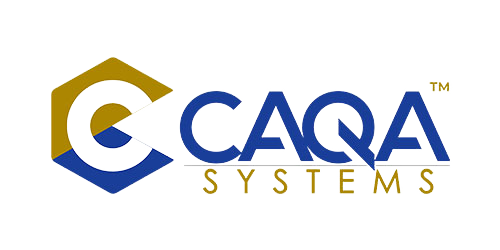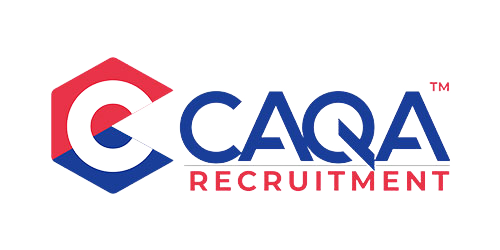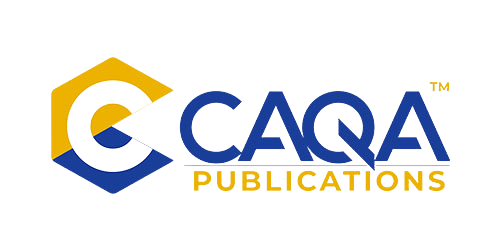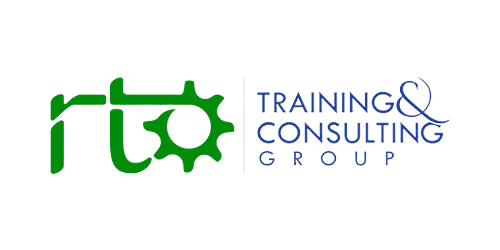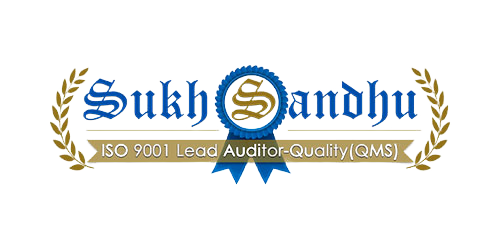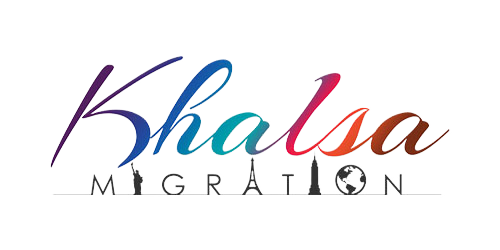Understanding the Regulatory Landscape in Australia's VET Sector
The newly released Standards for Registered Training Organisations (RTOs) 2025—officially titled the National Vocational Education and Training Regulator (Outcome Standards for NVR Registered Training Organisations) Instrument 2025 and the National Vocational Education and Training Regulator (Compliance Standards for NVR Registered Training Organisations and Fit and Proper Person Requirements) Instrument 2025—have been unveiled. However, many training organisations now face significant time constraints to review, comprehend, and implement the required changes. Upon examining these standards, we find them open to interpretation, which may lead to significant challenges for industry stakeholders. While this article focuses on explaining the Government’s intentions behind these updates, we plan to provide a more detailed critique in future editions or through other platforms.
|
DEWR has published the National Vocational Education and Training Regulator (Outcome Standards for NVR Registered Training Organisations) Instrument 2025 and the National Vocational Education and Training Regulator (Compliance Standards for NVR Registered Training Organisations and Fit and Proper Person Requirements) Instrument 2025 on the Federal Register and the Credential Policy on the National Register, training.gov.au. |
Australia's vocational education and training (VET) sector is at a pivotal moment as these revised Standards redefine the framework for quality assurance. These regulations, according to Government guidelines, are more than just compliance measures; they reflect a national commitment to offering high-quality training that meets the shifting needs of students, industries, and the broader Australian community. With nearly 4,000 RTOs operating across the country, the need for consistent and reliable quality standards is critical. The updated Standards, according to Government guidelines, aim to build a VET sector that is trusted, capable and prepared to provide the skills Australia requires to thrive in the future.
The regulatory environment for RTOs involves a complex interplay between national and state-based regulators, with the Australian Skills Quality Authority (ASQA), the Victorian Registration and Qualifications Authority (VRQA), and the Training Accreditation Council Western Australia (TAC WA) all playing significant roles. Understanding this regulatory landscape is essential for RTOs navigating compliance requirements and striving for quality outcomes. This article provides a comprehensive exploration of the revised Standards, their implementation across different jurisdictions, and practical approaches to achieving compliance while delivering excellence in training.
The Tripartite Regulatory Framework: ASQA, VRQA, and TAC WA
While ASQA serves as the national VET regulator for most Australian RTOs, the regulatory landscape is more nuanced than many training providers realise. Both Victoria and Western Australia operate as 'non-referring jurisdictions,' which means they retain certain regulatory functions within their borders through VRQA and TAC WA, respectively.
ASQA's jurisdiction extends to RTOs delivering training products nationally or in the ACT, NSW, NT, SA, QLD, and TAS. Additionally, ASQA regulates all RTOs registered on CRICOS for delivery to overseas VET students and those delivering online training products. This means that many RTOs operating across multiple states will fall under ASQA's regulatory oversight.
TAC WA regulates providers delivering training products exclusively in Western Australia, provided they don't fall into one of the categories regulated by ASQA. The requirements for these RTOs are set out in the WA Vocational Education and Training Act 1996 and the Vocational Education and Training (General) Regulations 2009.
VRQA oversees providers delivering training products exclusively in Victoria, provided they don't fall into one of the categories regulated by ASQA. It's important to note that Victoria has its own specific standards that differ from the national Standards for RTOs.
This tripartite regulatory structure means that RTOs must carefully consider their scope of operations and student cohort to determine which regulator(s) they need to engage with. For RTOs expanding their operations across state lines or moving into international student markets, understanding these jurisdictional boundaries becomes particularly important.
The VET Quality Framework: Beyond the Standards
The Standards for RTOs form just one component of the broader VET Quality Framework, which collectively ensures the integrity of nationally recognised training in Australia. Understanding this broader framework is crucial for RTOs seeking to maintain compliance and deliver quality outcomes.
The VET Quality Framework comprises five key elements:
-
The Standards for RTOs: These form the foundation for quality training by describing the key factors that contribute to quality VET. The Standards consist of three documents: the Outcome Standards, the Compliance Requirements (including the Fit and Proper Person Requirements and NRT Logo Conditions of Use Policy), and the Credential Policy.
-
The Australian Qualifications Framework (AQF): The AQF sets out requirements for regulated qualifications in the Australian education and training system, establishing course levels, qualifications, and associated learning outcomes to support flexible, nationally consistent, and high-quality qualifications.
-
The Fit and Proper Person Requirements: Set out in Schedule 1 of the Compliance Requirements and the Vocational Education and Training (General) Regulations 2009, these requirements ensure that executive officers, governing persons, and others exercising control over an RTO are suitable to direct or manage the organisation.
-
The Financial Viability Risk Assessment Requirements: These are outlined in the Vocational Education and Training (General) Regulations 2009 and associated Ministerial Guidelines, describing how financial viability risk assessments of RTOs are undertaken to monitor their financial position and mitigate risks to VET students.
-
The Data Provision Requirements: These requirements, set out in the Vocational Education and Training (General) Regulations 2009, specify the data that RTOs must provide to regulators.
Organisations applying for registration as an RTO must demonstrate their ability to comply with this entire framework. Once registered, ongoing compliance is essential and is tested through audits and other regulatory activities by ASQA, VRQA, or TAC WA, depending on the jurisdiction.
Unpacking the Outcome Standards: The Four Quality Areas
The Outcome Standards are structured around four Quality Areas, each with a clear outcome statement that describes what RTOs should achieve. Understanding these Quality Areas and their associated standards is critical for RTOs seeking to deliver high-quality training.
Quality Area 1: Training and Assessment
The outcome statement for this Quality Area highlights that "Quality training and assessment engage VET students and enable them to achieve nationally recognised, industry-relevant competencies." This area includes eight standards, addressing key aspects such as training (Division 1 - Standard 1.1, 1.2), assessment (Division 2 - Standard 1.3, 1.4, 1.5), recognition of prior learning and credit transfer (Division 3 - Standard 1.6, 1.7), as well as facilities, equipment, and resources (Division 4 - Standard 1.8).
Each standard includes an outcome statement and performance indicators to guide compliance. For example, Standard 1.8 focuses on the facilities, resources, and equipment required for training products, ensuring they are fit-for-purpose, safe, accessible, and sufficient.
Outcome Standard
-
Facilities, resources and equipment for each training product are fit-for-purpose, safe, accessible and sufficient.
Performance Indicators
-
An NVR-registered training organisation demonstrates:
-
how it identifies the facilities, resources and equipment required to deliver the training product, including how it identifies which facilities, resources, and equipment will be provided by third parties instead of the organisation;
-
where facilities, resources and equipment are provided by the organisation or third parties – how the organisation ensures:
-
that the facilities, resources and equipment are, and will continue to be, suitable and safe for use by VET students and
-
that VET students have access to the facilities, resources and equipment they need to participate in the training and assessment relevant to the training product and
-
it has documented strategies and procedures in place to identify and manage risks associated with VET students using facilities, resources and equipment when undertaking work-integrated learning, work placements, or other community-based learning as part of their training
By addressing these standards, it is anticipated that organisations can ensure a high-quality training experience that prioritises student engagement, safety, and competency development.
Effective training in this Quality Area is characterised by engagement, good structure, and alignment with the training product. Industry relevance is emphasised through requirements for ongoing engagement with industry representatives. The assessment system must be fit-for-purpose, fair, and validated by appropriately skilled people. Recognition of prior learning and credit transfer are highlighted as important mechanisms for supporting student progression.
A key standard in this area relates to facilities, resources, and equipment, which must be fit-for-purpose, safe, accessible, and sufficient for each training product. RTOs should consider how their physical and digital learning environments support quality training delivery and ensure they meet industry expectations for workplace preparation.
Quality Area 2: VET Student Support
The outcome statement for this area stipulates that "VET students are treated fairly and are properly informed, protected, and supported." This area includes eight standards covering information provision (Division 1 - Standard 2.1, 2.2), training support (Division 2 - Standard 2.3, 2.4), diversity and inclusion (Division 3 - Standard 2.5), wellbeing (Division 4 - Standard 2.6), feedback, complaints, and appeals processes (Standard 2.7 and 2.8).
RTOs must ensure students have access to clear and accurate information to make informed decisions about their training. This includes pre-enrollment advice about the suitability of training products based on students' existing skills and competencies. Support services must be reasonably accessible, and reasonable adjustments must be made for students with disabilities.
The standards emphasise the importance of promoting and supporting student diversity, identifying and addressing wellbeing needs, and maintaining effective feedback, complaints, and appeals processes. These elements collectively contribute to a supportive learning environment that maximises student success.
Quality Area 3: VET Workforce
The outcome statement for this area emphasises that "VET students are trained, assessed and supported by people who are qualified, skilled and committed to professional development." This area includes three standards covering VET workforce management (Division 1 - Standard 3.1) and trainer and assessor competencies (Division 2 - Standard 3.2 and 3.3).
Effective workforce management is essential for ensuring appropriate staffing to deliver quality services. Trainers and assessors must be properly credentialed and possess current skills and knowledge in both training and assessment and the industry relevant to the training product.
RTOs should establish robust systems for recruiting, inducting, developing, and supporting their workforce. This includes processes for verifying credentials, supporting ongoing professional development, and ensuring staff maintain currency in both their industry and training expertise.
Quality Area 4: Governance
The outcome statement for this final area highlights that "Effective governance and a commitment to continuous improvement supports the quality and integrity of VET delivery." This area includes four standards covering leadership and accountability (Division 1 - Standard 4.1, 4.2), risk management (Division 2 - Standard 4.3), and continuous improvement (Division 3 - Standard 4.4).
RTOs must operate with integrity and be accountable for the delivery of quality services. Roles and responsibilities should be clearly defined and understood throughout the organisation. Effective risk management processes should identify and address risks to students, staff, and the RTO itself.
A systematic approach to monitoring and evaluation is essential for supporting quality service delivery and driving continuous improvement. RTOs should establish mechanisms for gathering feedback, analysing performance data, and implementing improvements based on these insights.
Key Stakeholders in Quality Training and Assessment
The newly released Standards for Registered Training Organisations (RTOs) 2025 will significantly impact various stakeholders in the vocational education and training (VET) sector. These standards, officially titled the National Vocational Education and Training Regulator (Outcome Standards for NVR Registered Training Organisations) Instrument 2025, are designed to enhance quality assurance and ensure that training meets the evolving needs of students, industries, and the broader Australian community.
RTOs themselves play a pivotal role in quality training delivery, primarily through key personnel. Governing persons set the direction and culture of RTOs, overseeing performance and guiding continuous improvement. Their commitment to quality often resonates throughout the organisation. Trainers and assessors, as frontline staff, deliver training and assess student competency, directly influencing the quality of student outcomes with their industry knowledge, teaching skills, and assessment expertise. Other staff members, including administrative, support, and wellbeing personnel, contribute to the student experience and the overall functioning of the RTO. Additionally, many RTOs rely on third-party organisations or individuals for services such as marketing, student recruitment, and facilities provision, requiring effective oversight to maintain quality.
Impact on RTOs
-
Compliance and Quality Assurance: RTOs will need to navigate a more complex regulatory environment, depending on their operational scope. The updated standards intent to emphasise the importance of quality training and assessment, student support, workforce qualifications, and governance.
-
Implementation Challenges: RTOs face significant time constraints to review, comprehend, and implement the required changes. The standards are open to interpretation, which may lead to challenges in ensuring consistent compliance across different jurisdictions.
-
Quality Areas: The Outcome Standards are structured around four Quality Areas:
-
Training and Assessment: Ensures that training is engaging and industry-relevant, with a focus on facilities, resources, and equipment.
-
VET Student Support: Emphasises fairness, information provision, support services, diversity, inclusion, wellbeing, and feedback processes.
-
VET Workforce: Requires trainers and assessors to be qualified, skilled, and committed to professional development.
-
Governance: Focuses on effective leadership, accountability, risk management, and continuous improvement.
Vocational Education and Training (VET) students rely on these outcomes to gain employment, advance their careers, or develop life skills. They need to make informed choices about training that meets their needs and have confidence in the quality of their chosen provider. Students can contribute to quality improvement by providing feedback and raising concerns when issues arise.
Impact on Students
-
Quality of Training: Students are supposed to be benefitted from improved training quality, ensuring they gain industry-relevant competencies and are better prepared for the workforce.
-
Support Services: Enhanced student support mechanisms will provide clearer information, accessible services, and a more inclusive learning environment.
-
Feedback and Improvement: Students will have more opportunities to provide feedback, contributing to continuous improvement in training delivery.
Industry and employers also play a significant role, as they depend on RTOs to develop essential skills in both potential and existing employees. Active engagement between RTOs and industry ensures that training remains relevant to workplace needs and that graduates are work-ready. Industry associations and VET professional bodies support quality delivery through advocacy, resources, and professional development.
Impact on Industry and Employers
-
Relevance of Training: Active engagement between RTOs and industry will ensure that training remains aligned with workplace needs, producing work-ready graduates.
-
Advocacy and Resources: Industry associations and professional bodies will continue to support quality delivery through advocacy and resource provision.
Governments, as significant purchasers of VET through public funding and subsidies, have a vested interest in the quality of training delivery. They invest in supporting infrastructure, maintain sector oversight, direct resources to areas of greatest need, and develop standards that drive quality outcomes.
Impact on Governments
-
Investment in Infrastructure: Governments will possibly continue investing in supporting infrastructure and maintaining sector oversight to ensure quality outcomes.
-
Standards Development: Governments will play a crucial role in developing standards that drive quality outcomes and meet national needs.
Finally, VET regulators such as ASQA, TAC WA, and VRQA contribute to overall VET quality by controlling market entry, monitoring provider performance, and taking action when providers fail to meet compliance standards. Their regulatory activities aim to protect students and maintain the integrity of their qualifications.
Impact on Regulators
Regulatory Oversight: Regulators like ASQA, VRQA, and TAC WA will continue to monitor provider performance, ensuring compliance with the updated standards and maintaining the integrity of qualifications.
Demonstrating Compliance with the Standards
RTOs regulated by ASQA, TAC WA, or VRQA are responsible for ensuring they meet the applicable standards at all times, not just during audits or registration processes. This includes when services are subcontracted to other organisations or individuals.
The approach to compliance will necessarily differ between RTOs based on their context, including organisational structure, size, location, service offering, student cohort, and other factors. RTOs should establish systems and processes that are proportionate to risk and tailored to their specific circumstances.
Self-Assurance: A Proactive Approach
Self-assurance involves RTOs systematically evaluating their own performance against the Standards and taking action to address gaps or areas for improvement. This proactive approach helps RTOs maintain compliance with formal regulatory activities and supports continuous quality improvement.
Regulators have developed or are currently developing self-assurance statements and reflective questions to assist RTOs in considering their processes and procedures. These resources can help RTOs determine whether their approaches are appropriate for their context and meet the revised Standards.
When using these self-assurance tools, RTOs should focus on achieving the outcomes described in the Standards rather than simply ticking boxes. The flexibility built into the revised Standards allows for innovation and contextual adaptation, provided the quality outcomes are achieved.
Beyond Compliance: Striving for Excellence
While meeting the Standards is a baseline requirement for registration, many RTOs aspire to exceed these minimum requirements and deliver exceptional training experiences. This commitment to excellence can differentiate an RTO in the marketplace and lead to better outcomes for students and the industry.
Excellence might be demonstrated through innovative teaching approaches, comprehensive student support services, deep industry engagement, or other initiatives that enhance the quality of training delivery. RTOs pursuing excellence often establish internal quality benchmarks that go beyond regulatory requirements and regularly measure their performance against these higher standards.
Navigating Broader Regulatory Requirements
In addition to the Standards for RTOs, training providers must comply with a range of broader regulatory requirements. Some of these are specifically referenced in the Standards, including:
-
The Disability Standards for Education 2005
-
The Student Identifiers Act 2014
-
The National Principles for Child Safe Organisations
However, most applicable legislative requirements are not explicitly mentioned in the Standards. The specific requirements vary based on organisational type, structure, size, location, student cohort, and scope of services.
RTOs must take responsibility for understanding and complying with all relevant legislation, which may include:
-
Work health and safety laws
-
Privacy legislation
-
Anti-discrimination and equal opportunity laws
-
Consumer protection requirements
-
Copyright and intellectual property laws
-
Employment legislation
-
Industry-specific regulations (particularly for high-risk or licensed occupations)
Maintaining compliance with this broader regulatory environment requires ongoing vigilance and systematic approaches to monitoring legislative changes and implementing necessary adjustments to policies and practices.
Practical Strategies for Meeting the Standards
Achieving and maintaining compliance with the Standards requires a strategic and systematic approach. The following strategies can help RTOs navigate the regulatory landscape effectively:
Develop a Compliance Management System
A well-designed compliance management system is essential for Registered Training Organisations (RTOs) to effectively track and manage their regulatory obligations. This system should begin by identifying all applicable regulatory requirements, ensuring that RTOs are aware of the standards and regulations they must adhere to. This includes understanding the roles of national and state-based regulators such as ASQA, VRQA, and TAC WA, as well as the specific standards outlined in the National Vocational Education and Training Regulator (Outcome Standards for NVR Registered Training Organisations) Instrument 2025 and the National Vocational Education and Training Regulator (Compliance Standards for NVR Registered Training Organisations and Fit and Proper Person Requirements) Instrument 2025.
Once these requirements are identified, the system should assign responsibility for compliance monitoring and reporting. This ensures that specific individuals or teams are accountable for ensuring that the RTO meets its regulatory obligations, which can help prevent misunderstandings or oversights. Establishing timeframes for regular compliance reviews is also crucial, as it allows RTOs to systematically assess their compliance status and address any emerging issues before they become significant problems.
In addition to these proactive measures, the compliance management system should document processes for addressing non-compliance. This includes having clear procedures in place for identifying, reporting, and rectifying any instances where the RTO fails to meet regulatory standards. This not only helps in resolving immediate compliance issues but also contributes to a culture of continuous improvement within the organisation.
Finally, maintaining records of compliance activities and outcomes is vital. These records provide a historical view of the RTO's compliance journey, helping to identify trends, areas for improvement, and evidence of compliance for audits and regulatory reviews. By maintaining comprehensive records, RTOs can demonstrate their commitment to compliance and quality, which is essential for maintaining their registration and reputation in the vocational education sector.
Invest in Staff Development
The knowledge and capabilities of staff are critical to compliance and quality outcomes in Registered Training Organisations (RTOs). To ensure that staff contribute effectively to these goals, RTOs should implement several key strategies.
Firstly, RTOs must ensure that all staff understand the Standards relevant to their roles. This involves providing comprehensive training and resources so that every employee, from administrative staff to trainers and assessors, is aware of their responsibilities under the National Vocational Education and Training Regulator (Outcome Standards for NVR Registered Training Organisations) Instrument 2025 and the National Vocational Education and Training Regulator (Compliance Standards for NVR Registered Training Organisations and Fit and Proper Person Requirements) Instrument 2025. By doing so, RTOs can ensure that compliance is not just a regulatory requirement but an integral part of their operational culture.
Secondly, RTOs should provide regular training on compliance requirements and updates. This is particularly important given the evolving nature of regulatory standards and the need for RTOs to adapt quickly to changes. Regular training sessions help staff stay informed about new developments and ensure that they can implement these changes effectively in their daily work.
Thirdly, RTOs must support trainers and assessors to maintain industry currency. This involves providing opportunities for professional development and ensuring that trainers and assessors have access to the latest industry practices and technologies. By maintaining industry relevance, trainers and assessors can deliver training that is both current and relevant to the needs of students and employers.
Lastly, RTOs should foster a culture where quality and compliance are everyone's responsibility. This means encouraging a mindset among all staff that quality and compliance are not just the domain of specific compliance officers but are integral to every role within the organisation. By promoting this culture, RTOs can ensure that every staff member feels accountable for contributing to quality outcomes and compliance with regulatory standards. This collective approach helps to build a robust and sustainable compliance management system that supports the overall mission of the RTO.
Engage with Industry
Meaningful industry engagement is crucial for Registered Training Organisations (RTOs) to deliver relevant and high-quality training that aligns with current industry needs. Effective approaches to industry engagement include several key strategies:
Firstly, establishing industry advisory committees is a valuable method for RTOs to engage with industry stakeholders. These committees consist of industry experts who provide strategic guidance on training and assessment strategies, ensuring that they remain relevant and aligned with industry practices. By involving industry representatives in these committees, RTOs can gather insights into emerging trends and skills requirements, which inform the development of training programs.
Secondly, facilitating regular industry consultations on training and assessment strategies is essential. This involves ongoing dialogue with industry stakeholders to review and refine training programs, ensuring they meet the evolving needs of employers and the broader industry. Regular consultations can be conducted through various methods, such as surveys, focus groups, and workshops, allowing RTOs to gather feedback and adjust their training delivery accordingly.
Thirdly, arranging industry placements for trainers and assessors helps maintain their industry currency. By embedding trainers and assessors in real-world industry settings, RTOs can ensure that their staff possess current skills and knowledge relevant to the training products they deliver. This not only enhances the quality of training but also supports the development of industry-relevant competencies among students.
Lastly, collecting and responding to employer feedback on graduate capabilities is vital for continuous improvement. Employers provide valuable insights into the skills and competencies of graduates, which RTOs can use to refine their training programs. By actively seeking and acting on employer feedback, RTOs can ensure that their graduates are well-prepared for the workforce and meet industry expectations. This approach fosters strong industry partnerships and supports the employability of graduates, ultimately contributing to the quality and relevance of vocational education and training.
Implement Robust Student Support Systems
Supporting students throughout their learning journey contributes to both compliance and quality outcomes. RTOs should:
-
Provide accurate and accessible pre-enrollment information
-
Assess student needs early and offer appropriate support
-
Implement reasonable adjustments for students with disabilities
-
Establish clear pathways for feedback, complaints, and appeals
Adopt a Continuous Improvement Mindset
Quality is not a static state but an ongoing journey for Registered Training Organisations (RTOs). To maintain and enhance quality, RTOs should adopt a proactive and continuous improvement approach. This involves several key strategies:
Firstly, RTOs should regularly collect and analyse performance data. This data can include metrics on student outcomes, training delivery effectiveness, and compliance with regulatory standards. By regularly reviewing this data, RTOs can identify areas of strength and weakness, which informs targeted improvements.
Secondly, RTOs must seek feedback from students, staff, and industry. Feedback from these stakeholders provides valuable insights into the effectiveness of training programs and areas where improvements can be made. Students can offer perspectives on the relevance and quality of training, while staff can highlight operational challenges and opportunities for growth. Industry feedback is crucial for ensuring that training remains aligned with current industry needs.
Thirdly, RTOs should benchmark against other providers where possible. Benchmarking involves comparing performance metrics and practices with peer organisations to identify best practices and areas for improvement. This process can help RTOs stay competitive and innovative in their training delivery.
Fourthly, RTOs must implement improvements based on identified opportunities. Once areas for improvement are identified through data analysis and feedback, RTOs should develop and implement action plans to address these gaps. This might involve revising training materials, enhancing student support services, or improving assessment processes.
Lastly, RTOs should document continuous improvement activities and outcomes. Maintaining detailed records of improvement initiatives and their outcomes is essential for demonstrating compliance with regulatory standards and for internal evaluation purposes. These records can also serve as a resource for future improvement efforts, helping RTOs refine their strategies over time and maintain a culture of continuous improvement.
Beyond Compliance to Quality Culture
The revised Standards for RTOs offer a framework for quality assurance that balances regulatory requirements with the flexibility needed for RTOs to innovate and respond to diverse contexts. While compliance with these Standards is mandatory, the most successful RTOs will go beyond mere compliance to embed a culture of quality throughout their operations.
This quality culture is characterised by the following:
-
Leadership commitment to excellence in training delivery
-
Staff engagement in continuous improvement processes
-
Student-centred approaches to program design and delivery
-
Deep industry connections that ensure training relevance
-
Evidence-based decision-making informed by robust data collection and analysis
As Australia's VET sector continues to evolve in response to changing workforce needs and technological advances, the regulatory framework will likely also continue to develop. RTOs that build strong quality foundations and adaptable systems will be well-positioned to navigate these changes while maintaining their focus on delivering excellent training outcomes.
By understanding the regulatory landscape, embracing the intent behind the Standards, and implementing systematic approaches to quality assurance, RTOs can contribute to a VET sector that truly delivers on its promise of high-quality, industry-relevant training that prepares Australians for the jobs of today and tomorrow.
Resources for RTOs
For RTOs seeking to enhance their understanding of the Standards and improve their compliance approaches, the following resources may be helpful:
-
ASQA website (asqa.gov.au) for guidance materials, fact sheets, and regulatory updates
-
TAC WA website (tac.wa.gov.au) for Western Australia-specific resources and requirements
-
VRQA website (vrqa.vic.gov.au) for Victorian-specific standards and guidance
-
VET Regulators' self-assurance resources and tools
-
Industry peak bodies and professional associations for sector-specific compliance guidance
-
Department of Employment and Workplace Relations for policy updates and VET reform information
-
Quality RTO consulting services and RTO consultants are also providing the resources to understand these requirements and guidelines.
Remember that maintaining compliance is an ongoing process that requires regular attention and adaptation as regulatory requirements, industry expectations, and student needs continue to evolve. By staying informed and implementing robust quality systems, RTOs can navigate the regulatory landscape effectively while focusing on their core mission of delivering excellent training outcomes.





